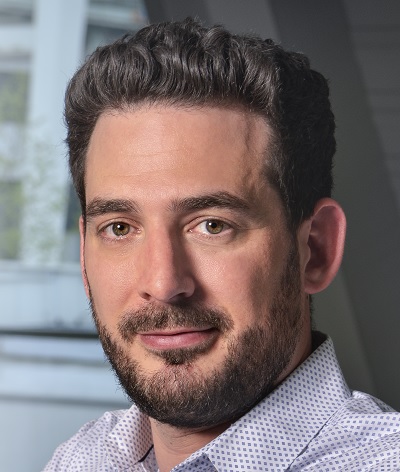Making the impossible possible and safe
 Opened in 2016, the Eurasia Tunnel is a double-deck road tunnel, with a diameter of nearly 45 feet. About 3.4 miles long, 2.1 miles of that running directly under the Bosphorus, it was bored below the seabed at a maximum depth of approximately 350 feet.
Opened in 2016, the Eurasia Tunnel is a double-deck road tunnel, with a diameter of nearly 45 feet. About 3.4 miles long, 2.1 miles of that running directly under the Bosphorus, it was bored below the seabed at a maximum depth of approximately 350 feet.
Existing tunnels, technology proves Great Lakes Tunnel no pipe dream
May 17, 2023
Editor’s note: For 2023, the Newsroom will explore the importance of tunnels in North America and around the world. Tunnels are an example of creative and engineering genius, and more importantly, they provide practical solutions and help move people and goods from one point to another. Enbridge has committed to building the Great Lakes Tunnel to house the Line 5 pipeline and possibly fiber cables to improve high-speed internet and 911 emergency services for northern Michigan.
Impossible. Not feasible. It won’t work. Can you really build it? How fast? How safe will it be?
Those are some of the reactions to the planned Great Lakes Tunnel Project that Enbridge has underway.
The idea is to build a multi-utility tunnel under the Straits of Mackinac to house a new section of the Line 5 pipeline. By placing the new pipeline in a tunnel under the lakebed, the risk of a ship’s anchor striking the pipeline would be zero and the chances of a release would be reduced to zero. Enbridge says a tunnel would protect the environment, the waters of the Great Lakes and keep energy flowing to the people who rely on it every day in the greater Michigan region.
For those who say it can’t be done, look at how the improbable has taken shape in other parts of the world.
Technology, know-how and problem solving have made what some thought impossible, possible and safe.
Eurasia Tunnel is a proven success
Around the globe, in another part of the world, thousands of cars travel each day in a tunnel well below the seabed, under the Bosphorus Strait in northwestern Turkey.
No pipe dream—it’s just solid engineering.
Image gallery: Eurasia Tunnel
Opened in 2016, the Eurasia Tunnel is a double-deck road tunnel, with a diameter of nearly 45 feet. About 3.4 miles long, with 2.1 miles of that running directly under the Bosphorus, the tunnel was bored below the seabed at a maximum depth of approximately 350 feet.
In comparison, the Great Lakes Tunnel would be about four miles long, approximately 20 feet wide, and placed below the lakebed at depths of approximately 500 feet near the middle of the Straits.
The Eurasia Tunnel was one of the most demanding engineering projects in the world.
“We are engineers,” said Steffen Dubé, president of Herrenknecht Tunnelling Systems USA. “We are expected to solve problems and we did.”
Dubé noted the team faced several challenges from the geology, which included a mixture of clay, sand and gravel, to dealing with possible earthquakes in the region, and pressure tunneling as deep as approximately 350 feet.
Herrenknecht, one of the world’s leaders in mechanized tunnelling technology, created a specifically designed tunnel-boring machine (TBM) for the Eurasia Tunnel project.
“The tunnel was built with a certain flexibility because of the seismic activity,” continued Dubé.
Herrenknecht develops TBMs that could withstand high pressures, as was encountered with the Eurasia Tunnel.
In technical terms, the Herrenknecht team delved into new territory in the tunneling industry. The TBM had a huge diameter—as large as a three-story house. At its deepest point, tunnel construction occurred with the water pressure of 11 bar (11 times the atmospheric pressure), marking the first time mechanized tunnelling technology excavated such a large diameter under such high pressure.
“We are focused on safety and on efficient technology like our TBMs to support the construction of sustainable infrastructure for the benefit of society,” said Dubé.
Ready to build in Michigan
Enbridge says it’s ready to start construction on the Great Lakes Tunnel as soon as all of the permits are secured.
“Part of effective planning is preparedness,” said Enbridge’s Kate Houchard, CMRP, area manager for Line 5 in the Great Lakes. “As with any large infrastructure project, we expect to face some challenges, and we will be prepared to resolve them, which includes working with world-class experts helping us to build the Great Lakes Tunnel.”
Enbridge has been in talks with representatives of Herrenknecht, a leader in the construction of tunnel-boring machines.
“Construction of the Eurasia Tunnel and other such projects in Seattle, under London and the one underway in the Chesapeake Bay all demonstrate that the Great Lakes Tunnel can be built safely,” said Houchard.
According to Enbridge, the Tunnel has a small environmental footprint. The Great Lakes Tunnel is a multi-utility tunnel, designed to house a new Line 5 pipeline segment and other utilities crossing the Straits below the lakebed.
Enbridge says the tunnel creates multiple wins:
- Addresses the concerns that Enbridge has heard from the public about protecting the waters of the Great Lakes.
- Reduces the chance of a release into the Great Lakes to zero.
- Enables the region to continue to receive the energy on which it relies, including the natural gas liquids Line 5 transports, which provide the propane to heat Michigan homes and businesses.
- Supports the manufacture of more than 6,000 products—toothbrushes, eyeglasses, medical equipment, cell phones, cars, and kayaks, to mention a few with the transport of light crude oil through Line 5.
- Allows for other utility services, such as high-speed fiber that would improve internet and 911 services for northern Michigan.
Tunnels provide solutions for people
Enbridge will pay for the Great Lakes Tunnel’s construction, operations and maintenance. Once built, the State of Michigan will own the tunnel through the Mackinac Straits Corridor Authority.
The expectation is that the Great Lakes Tunnel will be like the Eurasia Tunnel, serving the needs and benefiting the people of Michigan and the greater region.
“Tunnels in the U.S. and around the world have proven time and time again they can really improve our quality of life, provide solutions for people and protect the environment,” added Houchard. “It doesn’t get much better than that.”
















